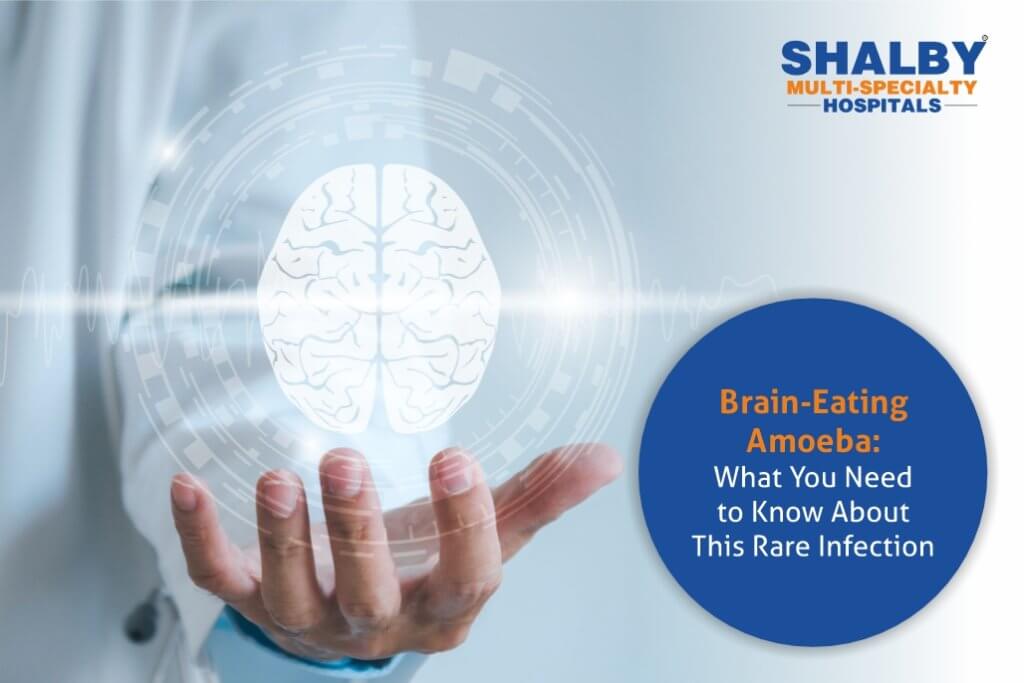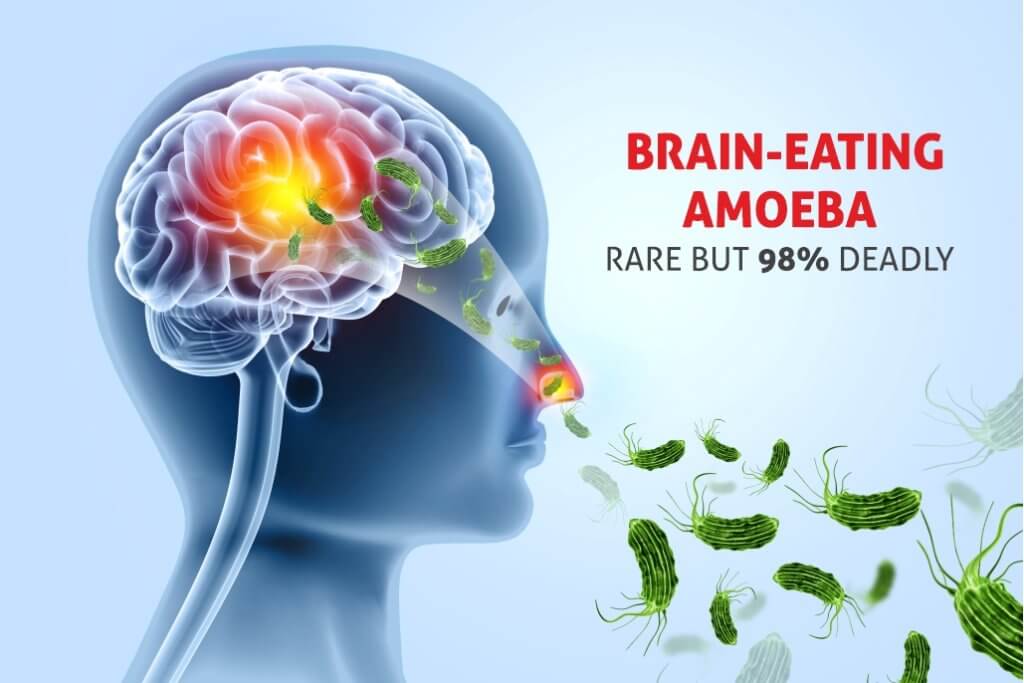
Few things sound scarier to most people than the idea of a “brain-eating amoeba.” This terrifying infection is caused by a tiny organism called Naegleria fowleri. Even though it sounds like something from a horror movie, it is a real but rare health condition that people should know about. This blog will explain how this amoeba spreads, what warning signs to watch for, and what treatments are available.
Naegleria fowleri is a microscopic amoeba found mostly in warm freshwater bodies like lakes, rivers, and hot springs. It also hides in soil sometimes. The amoeba naturally feeds on bacteria in the environment and usually doesn’t harm people. But problems start when this amoeba enters the human body through the nose.
Unlike contagious viruses or bacteria, the brain-eating amoeba does not spread from person to person. You cannot catch it by touching or being close to an infected person. Instead, infection happens when water containing this amoeba is forced into the nose. This usually happens during swimming, diving, water skiing, or other water activities in warm fresh water. Sometimes people get infected by using contaminated water for sinus rinsing with devices like neti pots, especially if the water is untreated. Once the amoeba enters the nose, it travels up the nasal passages and reaches the brain by crossing the olfactory nerve — which is linked with our sense of smell. There it feeds on brain tissue, causing severe inflammation and brain damage. This infection is medically called Primary Amoebic Meningoencephalitis (PAM).
Although Naegleria fowleri infections are very rare, the disease they cause is almost always fatal if not diagnosed early. The amoeba destroys brain tissue very quickly, and death usually happens within a week to ten days after symptoms start. Even with treatment, survival rates are very low worldwide. The cases have been mostly reported during hot months, especially in summer and early fall, because the amoeba thrives in warm water. Recently, places like Kerala in India have seen a spike in cases, which has increased public concern.
The scary part about PAM is that its early symptoms look like many common illnesses such as flu or bacterial meningitis. This can delay diagnosis and treatment. Typical symptoms start appearing between 1 to 12 days after exposure to infected water. Early symptoms include:
As the disease progresses, it causes more serious neurological symptoms such as:
If someone develops sudden fever with headache and stiff neck after swimming in warm freshwater or using untreated water in the nose, they should seek emergency medical care immediately.
Diagnosing PAM is difficult and takes specialized tests. Doctors will try to find the amoeba in the cerebrospinal fluid (from a spinal tap) or brain tissue samples under the microscope. Unfortunately, only a few labs in the world can do these tests. Most often, diagnosis is made after death, which is why early suspicion and treatment are so important.
Treating brain-eating amoeba infection is very challenging. There is no single “magic bullet” drug approved specifically for this infection. However, some drugs have shown effectiveness:
Doctors also try to reduce brain swelling by cooling the body and taking other supportive measures. Despite these treatments, the survival rate is very low. Only a handful of people worldwide have survived PAM after early and aggressive treatment.
Prevention and Safety Tips

Since the infection is rare but severe, prevention is the best approach:
Conclusion
Brain-eating amoeba infection is a rare but deadly disease that requires quick and expert medical care. Early diagnosis and treatment are key, but because it progresses so fast, many cases end tragically. For anyone facing neurological emergencies or seeking top-quality neurological care, it is important to go to a trusted and well-equipped hospital.
Shalby Hospital is one of the best hospitals in India for neurological care. Located in Ahmedabad, it has a top neurosciences department with advanced technology and some of the top neurologists and neurosurgeons. They offer 24/7 emergency services and personalized treatment for complex brain conditions.
Choosing Shalby means getting expert care you can rely on. If you or your loved ones need neurological help, don’t wait—book a consultation with their specialists today and get care from the best hands.
Few things sound scarier to most people than the idea of a “brain-eating amoeba.” This terrifying infection is caused by a tiny organism called Naegleria fowleri. Even though it sounds like something from a horror movie, it is a real but rare...
World Alzheimer’s Day, observed every September 21, shines a spotlight on one of the most challenging brain disorders of our time. Alzheimer’s disease affects millions worldwide, altering memory, thinking skills, and behavior. On this important day, it is vital to dispel common...
Neurological disorders are complex and require specialized care from skilled professionals who understand the intricate workings of the nervous system. When it comes to getting top-quality neurological care in Ahmedabad, Shalby Hospital stands out as a trusted name. With advanced facilities, expert...